Top 10 Tree Species For Bonsais
There are various tree species used for creating bonsais. While there is no single answer as to what is the best tree to use, there are a few species that are well-known and used frequently. Below is a brief list of ten such species, describing the different characteristics of these trees.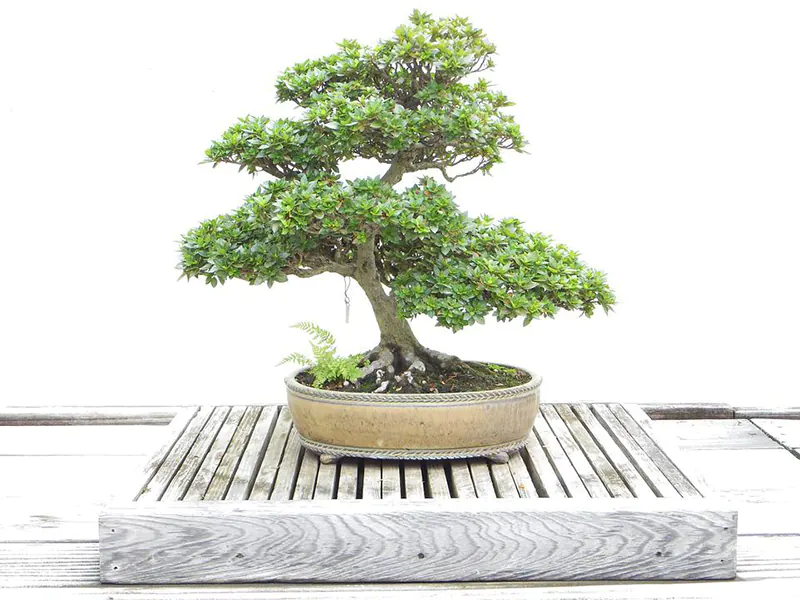
Dwarf Umbrella (Schefflera Arboricola)
Dwarf Umbrella is a popular species for bonsais. It is a tropical plant that can be grown outdoors or indoors as a houseplant. The plant has medium-green leaves arranged in a bunch. The leaves are about 20 cm long and about 10 cm wide.
Dwarf Umbrella is not considered invasive, but it spreads quickly when planted in the ground or large pots. It’s best to keep its roots confined to one pot by pruning away any stray stems or branches outside of your container.
As with most plants, this species needs plenty of light to thrive. It also requires good air circulation so that its roots do not get too moist or too dry throughout the day. This helps prevent diseases from developing on them.
To help ensure good air circulation around your Dwarf Umbrella’s roots, place it on top of a tray filled with rocks or gravel so that its pot sits above them. This will also help hold water in its container, and it stays moist enough during hot weather conditions.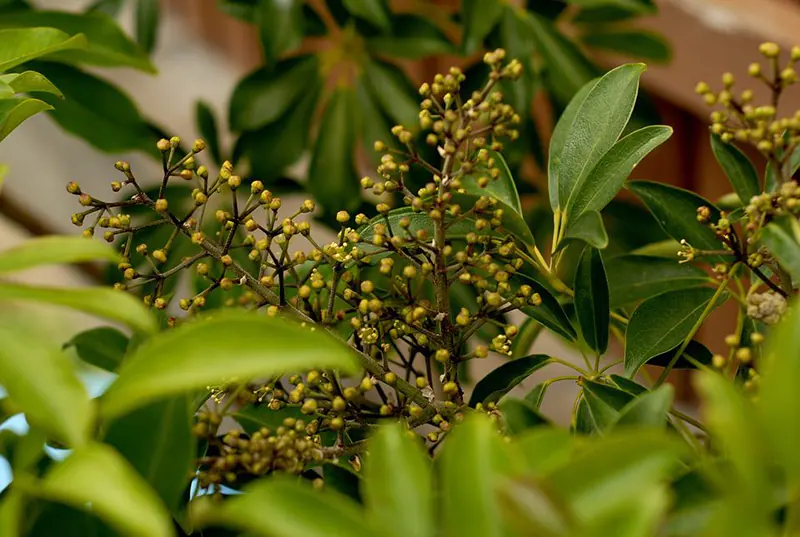
Indian Laurel Fig (Ficus Retusa)
The Indian Laurel Fig is a popular choice for bonsai enthusiasts because of its ability to grow in nearly any condition and its stunning foliage which can be kept neat and small with consistent pruning.
The Indian Laurel Fig can be grown in full sun or shade, as long as it gets plenty of water. The tree does not do well with too much direct sunlight, so keep this in mind when deciding where you want to plant it. If you want an indoor tree, try placing it near a window that gets plenty of light but not direct sunlight.
Care for your Ficus Retusa by regularly pruning to keep the branches from getting too big. Prune any branches that are too thick or long so that they don’t crowd out other branches on your tree. This will also help keep your tree looking neat and tidy!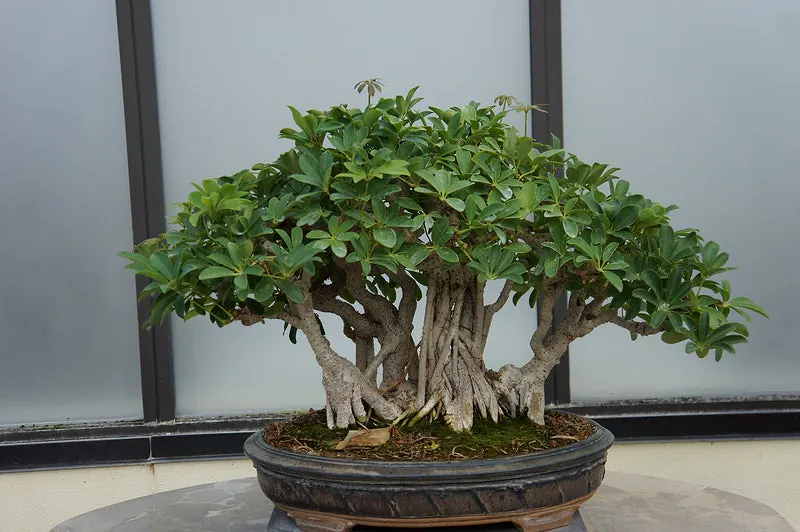
Bodhi Tree (Ficus Religiosa)
The bodhi tree is a popular species for bonsais. The plant can be grown indoors or outdoors, but it does best when it receives plenty of sunlight. The bodhi tree is native to India. It has a soft green bark that is smooth in texture and produces small white flowers that turn into red fruit pods. The bodhi tree leaves are oval-shaped and grow in pairs from the branches. The leaves are dark green on top with lighter green undersides.
Bodhi trees should be planted in well-drained soil in full sun or partial shade; they prefer soil rich in organic matter and has good drainage properties. They will do well indoors if you keep them away from cold drafts and warm windowsills so they can receive adequate sunlight.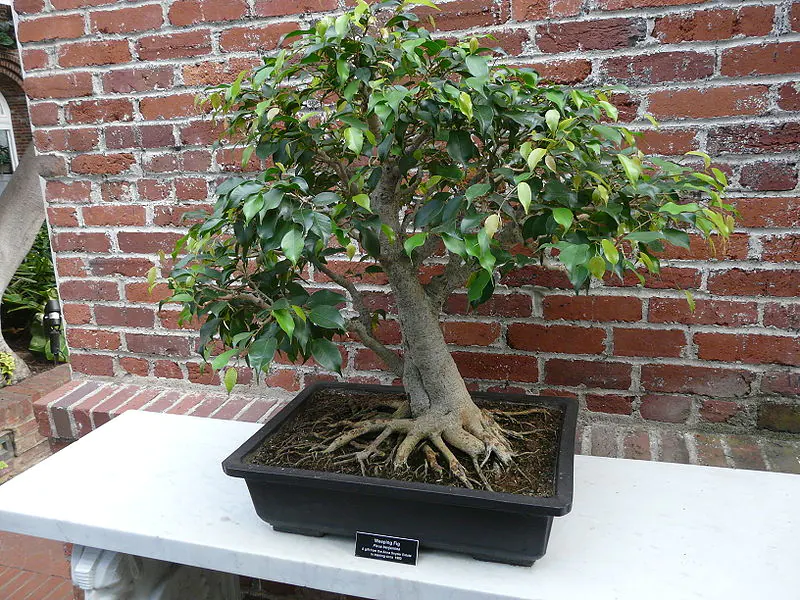
Image courtesy of Piotrus
Crepe Myrtle (Lagerstroemia Indica)
The Crepe Myrtle is a popular species for bonsais. It’s easy to grow, and it has beautiful flowers that bloom in the summer. These trees are native to the southern United States, so they do best in warm climates. But you can plant your Crepe Myrtle outside in the spring or fall if you live somewhere with temperate weather.
Crepe Myrtles can grow up to 15 feet tall, but when grown as bonsais, their height usually ranges from 6 inches to 4 feet. They have dark green leaves that turn red in the fall, and they’re covered with clusters of small white flowers in June and July.
If you want a bonsai tree that looks like an ivy plant but don’t want to spend all your time trimming it into shape, then consider a Crepe Myrtle! It’s easy to grow and maintain—all you need is some patience while it grows into its new form!
Boxwood (Buxus Harlandii)
Boxwood is one of the most popular species for bonsai because its leaves are small, dark green, and shiny, and it has a symmetrical shape. Boxwood grows well in containers, so it can be kept small enough to make an attractive bonsai tree. The best boxwoods are slow-growing varieties that have compact growth.
The best time to plant boxwoods is in spring or fall when they are dormant. Be careful not to overwater them if you live in a hot climate. If your boxwood gets too much water, it will begin to rot or have insects that eat it from the inside out. You should also fertilize your boxwood every spring with a balanced fertilizer such as 10-10-10 or 20-20-20 liquid fertilizer mixed at half strength with water.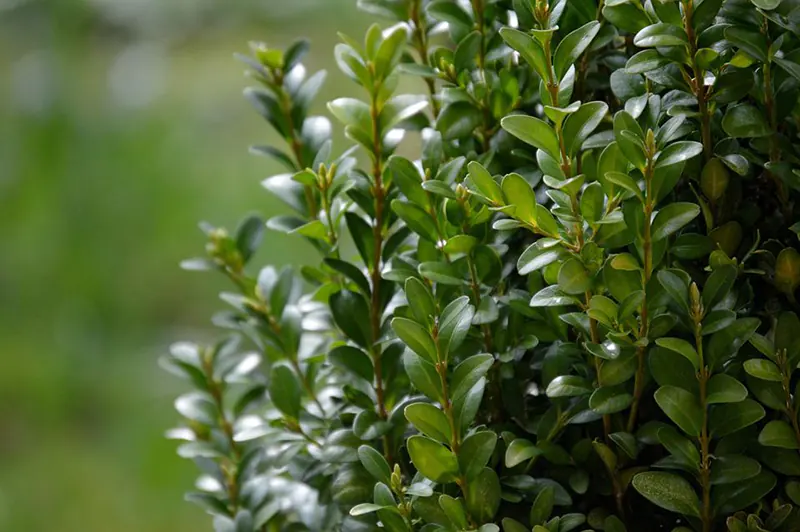
Money Tree Bonsai (Pachira Aquatica)
The money tree bonsai is an excellent choice for all bonsai enthusiasts. It’s easy to care for, grows quickly, and its rounded leaves make it an attractive addition to any home or office setting.
This bonsai is native to South America and can grow up to 20 feet tall in its natural habitat. However, when grown as a bonsai, this plant will only reach about three feet. The trunk of this bonsai has dark brown bark that peels off in long strips as it ages; this bark can also be removed from younger plants if desired.
The money tree bonsai has a thick canopy of green leaves that grow in pairs on either side of the trunk; these leaves are large and round with wavy edges. These leaves are often tinged with purple or red when young but turn green as they mature.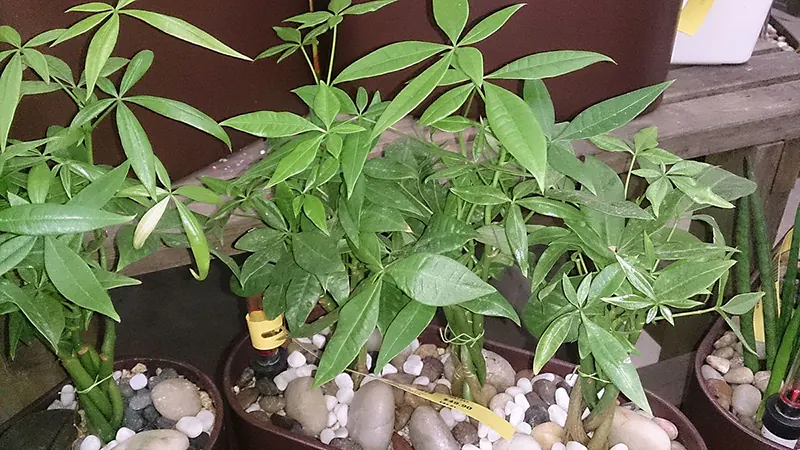
Japanese Maple (Acer Palmatum)
Japanese Maple is a popular species for bonsais. They are easy to grow and ideal for beginners, but they can also be grown as a more advanced specimen. The Japanese Maple has a very distinctive shape, with elongated leaves usually two-toned. Depending on the variety, the leaves can be green with white veins or red with yellow veins.
The Japanese Maple can be used as a single tree or in groups of trees. It is also possible to create multiple trunks on one tree using grafting techniques, making it even more interesting to look at.
These bonsais do best in full sun or partial shade, and they like moist soil that drains well but retains some moisture during dry periods in winter (especially when young). They will not tolerate drought conditions well, so it’s important to make sure you water them regularly during dry spells if you live in an area where this frequently happens during the summer months (or anytime that’s hot outside).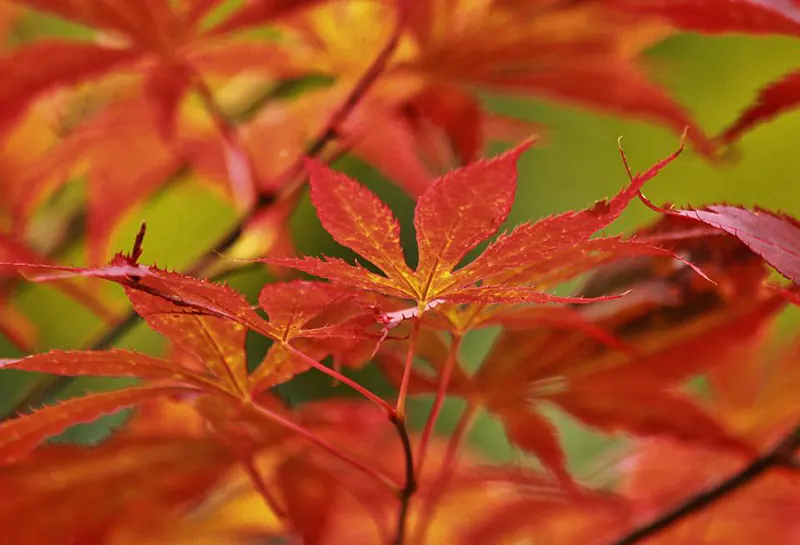
Common Beech (Fagus Sylvatica)
Common beech is a popular bonsai species. The tree can be found in many areas of the world, but it is native to Europe and Asia. The tree grows quickly and reaches heights of up to 80 feet. The leaves are dark green and smooth, while the bark is gray and rough.
These Common beech trees are known for their ability to adapt to various soil conditions. They can grow well in sandy or rocky soils and moist or dry soils. Common beech trees also have good resistance to diseases and insects. The common beech tree can be used as an ornamental plant and a food source for humans, animals, and birds.
Pomegranate (Punica Granatum)
Pomegranate is a popular species for bonsais. It is an evergreen shrub native to the Middle East and North Africa. The tree grows in many different forms, with varying trunk diameters and leaf shapes. There are also many varieties of this species identified by the color of their flowers and fruit.
The tree has been used in traditional medicine for centuries, particularly as a treatment for diarrhea. Today, the pomegranate tree is commonly used as an ornamental plant because of its hardiness and beautiful flowers, which appear in springtime before the leaves emerge.
The pomegranate is easy to grow indoors or out, but it requires regular watering during dry spells and plenty of sunlight if you plan to grow one outside your home. If you live somewhere where temperatures drop below freezing during winter months (such as northern states), consider moving your pomegranate indoors until warmer weather returns later in springtime before moving it back outdoors again once temperatures rise above 40 degrees Fahrenheit (4 degrees Celsius).
Jade (Crassula Ovata)
Jade is a popular species for bonsais because of its low-maintenance requirements and durability. It can be grown outdoors, in pots, or on the ground. The plant will tolerate sun or shade, and it will thrive in well-drained soil that is kept moist but not soggy.
You should prune jade when it’s young to shape it into a bonsai tree. When pruning, take off only small branches at a time so they can regenerate easily. Jade bonsais can handle heavy pruning—they can even be shaped into multiple trunks if you want to give them a more natural look. When growing jade, keep it away from direct sunlight because this type of plant does best when kept cool and shaded.
Conclusion
Overall, there are various options for creating a bonsai nursery with seeds. Some plants can be easily taken from the wild, while others require more effort. Each kind of plant also has its recommended way of taking it from the wild or buying it from a bonsai nursery. It is better to do some research because only this way will you know what you need and how to care for the plant.







